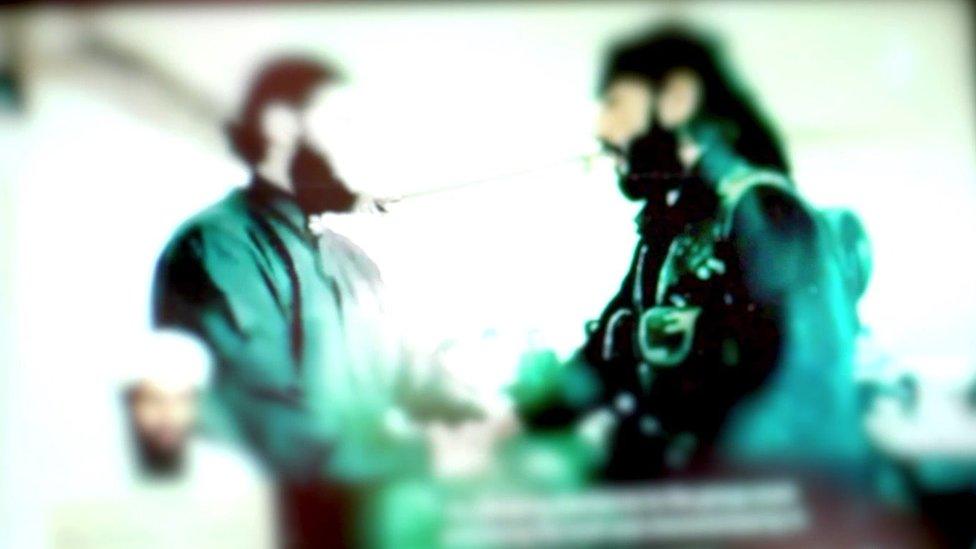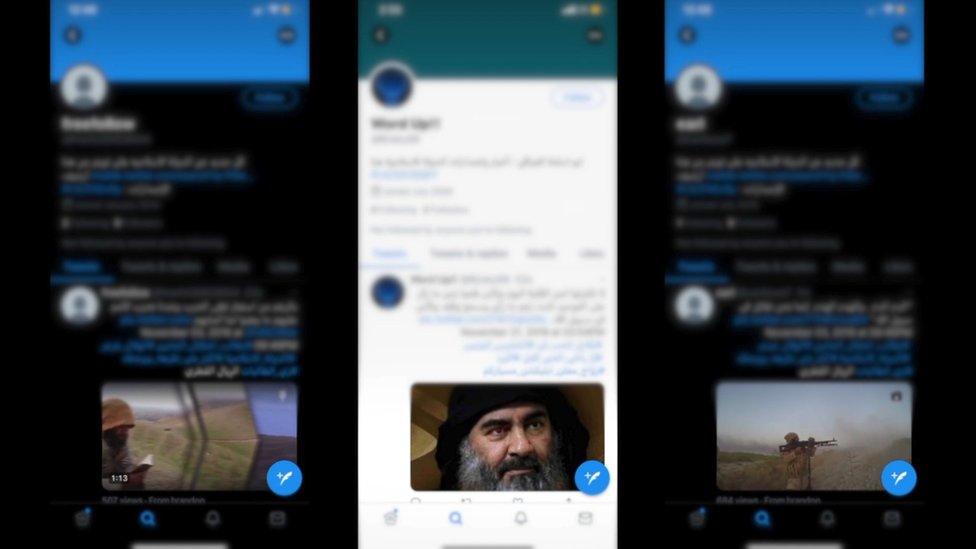Islamic State: Giant library of group's online propaganda discovered
- Published

Thousands of videos, graphics and other images have been collected together to form a growing propaganda archive
One of the largest collections of online material belonging to the group calling itself Islamic State has been discovered by researchers at the Institute of Strategic Dialogue (ISD).
The digital library contains more than 90,000 items and has an estimated 10,000 unique visitors a month.
Experts say it provides a way to continually replenish extremist content on the net.
But taking it down is difficult because the data is not stored in one place.
And despite counter-terrorism authorities in Britain and the US having been alerted to this growing repository, it continues to grow.
WATCH: Islamic State group's online propaganda library
'Better terrorist'
The discovery came after the death of the prominent IS leader Abu Bakr al-Baghdadi, in October 2019.
At the time, many social media posts supporting the organisation contained a short link.
It led researchers to documents and videos in nine different languages.
They included details of attacks, including those on Manchester Arena on 22 May 2017, in London on 7 July 2005 and in the US on 11 September 2001.
"[There's] everything you need to know to plan and carry out an attack," said ISD deputy director Moustafa Ayad, who discovered the archive.
"Things that teach you how to be a better terrorist essentially."

This graphic relate to the London bombings in July 2005
The ISD named the library the Caliphate Cache.
For months the institute's researchers have studied how it evolves, how it is being administered and who is visiting it.
The data is spread across a decentralised system, rather than a single computer server.
Anyone can share the content across the web, via servers based at multiple locations.
And this hampers any effort to take it offline.
But as long as the Caliphate Cache remains live, it aids IS by providing a means to continuously seed out content.
Pop singer
The material is added to social-media comments pages and spread via bot accounts.
Another technique has been to target Twitter accounts linked to celebrities and athletes.
For example, IS hijacked an account belonging to a fan of the pop singer Justin Bieber and used it to promote material from the cache.

This image was posted within a tweet from a compromised Justin Bieber fan account
In another case, the group managed to fool the English rugby team's account into following one of its own by masquerading as a supporter.
"They understand how not just to game platforms, they understand the power of the content that is contained within the Caliphate Cache," Mr Ayad said.
Runaway brides
Not all the cache's content is violent.
Visitors also encounter philosophies of IS, religious texts and propagandised versions of what an IS lifestyle looks like.
The researchers say this includes material runaway brides such as Shamima Begum would have seen.
Most of those drawn to the Caliphate Cache are 18- to 24-year-old males in the Arab world, with 40% of the traffic coming from social media, largely via YouTube.
Extremist groups
The ISD has also discovered the Caliphate Cache is not unique.
There are smaller repositories belonging to other extremist groups, many of which are also using decentralised platforms.

The library of material available for IS accounts to draw on continues to grow
"The attraction for jihadists of these platforms is that the developers of these decentralised platforms have no way of acting against content that is stored on user-operated servers or content that's shared across a dispersed network of users, " BBC Monitoring senior jihadi specialist Mina Al-Lami said.
"It's really all about privacy, freedom and encryption.
"That's what attracts jihadists."
The researchers have alerted the US Attorney's Office for Eastern District of New York, which prosecutes counter-terrorism cases, as well as the Met Police.
The authorities in New York have not commented.
But the Met acknowledged receiving the referral and said it was being assessed by specialist officers.
- Published14 August 2020

- Published13 July 2020

- Published13 February 2018